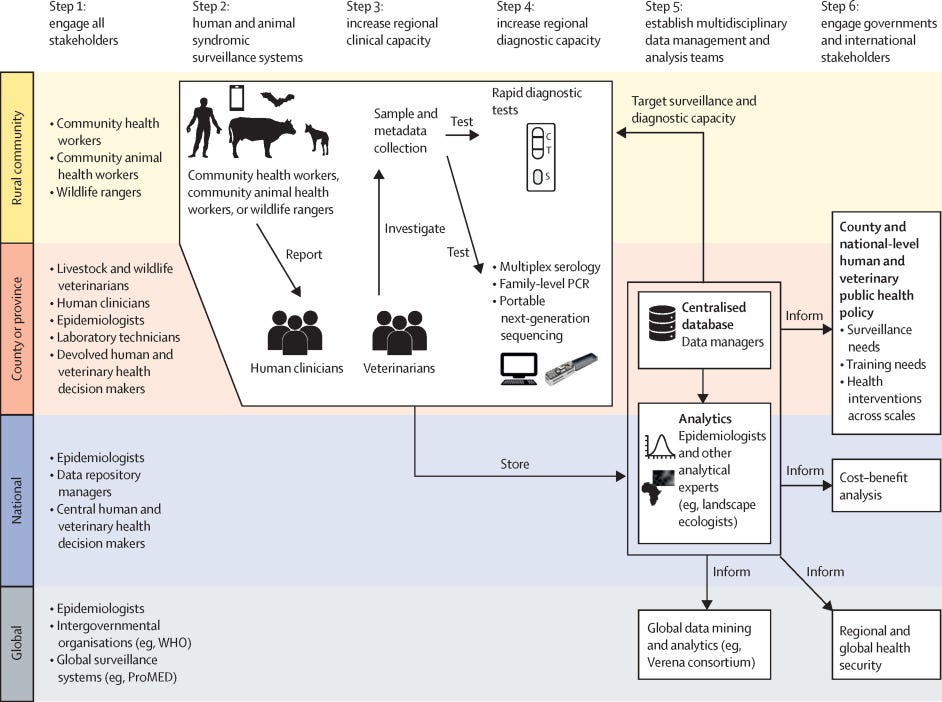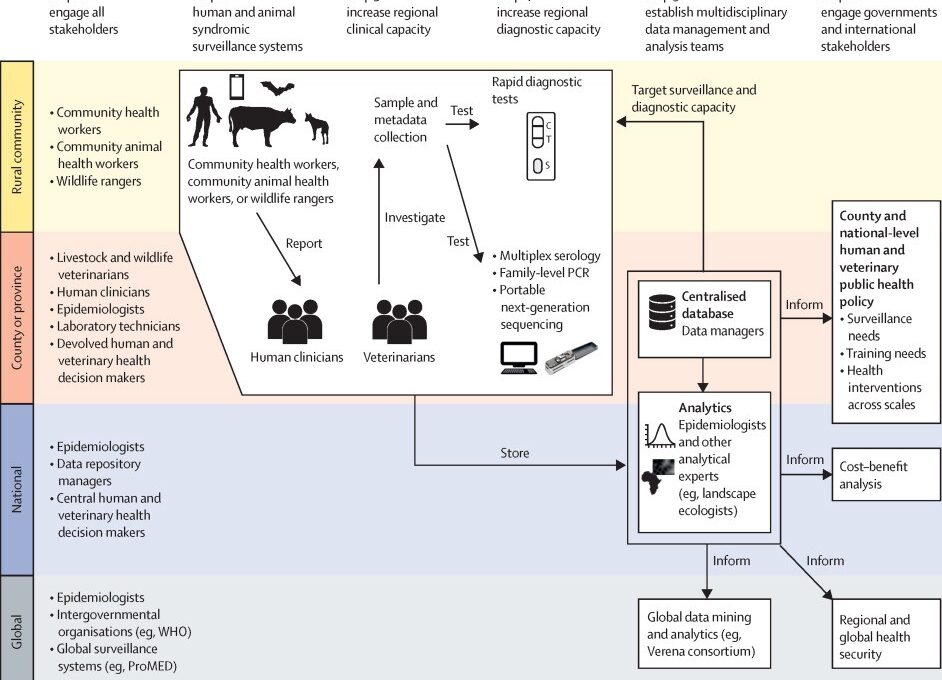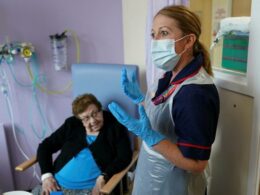Overcoming the limitations associated with passive surveillance
The Lancet
Katherine E L Worsley-Tonks, Jeff B Bender, Sharon L Deem, Adam W Ferguson, Eric M Fèvre, Dino J Martins, Dishon M Muloi, Suzan Murray, Mathew Mutinda, Darcy Ogada, George P Omondi, Shailendra Prasad, Hannah Wild, Dawn M Zimmerman, James M Hassell
April, 2022
Key messages
Summarized by Joaquim Cardoso MSc.
Digital Health Platform Institute (DHP)
@ Planning for the next pandemic project
April 4, 2022
- The COVID-19 pandemic has underscored the need to strengthen national surveillance systems to protect a globally connected world.
- In low-income and middle-income countries, zoonotic disease surveillance has advanced considerably in the past two decades. However, surveillance efforts often prioritise urban and adjacent rural communities.
- This Viewpoint represents a transition from simply highlighting the need for a more holistic approach to disease surveillance to a solid plan for how this outcome might be achieved.
The six-step framework proposed is the following:
- Step 1: engage all relevant stakeholders
- Step 2: establish human and animal syndromic surveillance systems to overcome limitations associated with passive surveillance
- Step 3: increase regional clinical capacity
- Step 4: increase regional diagnostic capacity
- Step 5: Strengthening global health security by improving disease surveillance in remote rural areas of low-income and middle-income countries
- Step 6: engage governments and international stakeholders

Summary
The COVID-19 pandemic has underscored the need to strengthen national surveillance systems to protect a globally connected world.
In low-income and middle-income countries, zoonotic disease surveillance has advanced considerably in the past two decades. However, surveillance efforts often prioritise urban and adjacent rural communities.
Communities in remote rural areas have had far less support despite having routine exposure to zoonotic diseases due to frequent contact with domestic and wild animals, and restricted access to health care.
Limited disease surveillance in remote rural areas is a crucial gap in global health security. Although this point has been made in the past, practical solutions on how to implement surveillance efficiently in these resource-limited and logistically challenging settings have yet to be discussed.
In low-income and middle-income countries, zoonotic disease surveillance has advanced considerably in the past two decades. However, surveillance efforts often prioritise urban and adjacent rural communities.
We highlight why investing in disease surveillance in remote rural areas of low-income and middle-income countries will benefit the global community and review current approaches.
Using semi-arid regions in Kenya as a case study, we provide a practical approach by which surveillance in remote rural areas can be strengthened and integrated into existing systems.
We highlight why investing in disease surveillance in remote rural areas of low-income and middle-income countries will benefit the global community and review current approaches.
This Viewpoint represents a transition from simply highlighting the need for a more holistic approach to disease surveillance to a solid plan for how this outcome might be achieved.
This Viewpoint represents a transition from simply highlighting the need for a more holistic approach to disease surveillance to a solid plan for how this outcome might be achieved.
Originally published at https://www.thelancet.com.
EXCERPT OF STEP 5
Step 5: establish interdisciplinary teams responsible for data management, evaluation of surveillance, and risk-based epidemiological analysis
For surveillance in remote rural areas to be effectively integrated into national surveillance efforts, systems should be built to facilitate communication and data sharing between human and animal health sectors, and across geographical scales.
An open-source online database maintained by centralised and decentralised data management teams (to ensure standardisation and coordination across county or province scales and national scales) would be key to these efforts.
Kenya is pushing for this approach to be adopted, evidenced by the creation of the ZDU, and several regional pilot studies have shown its feasibility. 23
Presence of epidemiologists on these teams for quantitative evaluation of surveillance data and risk-based analysis is also crucial.
Further, effective longer term storage and accessibility of biological samples is needed so that epidemiological trends can be monitored across space and time. 35
Epidemiological results should then be conveyed to policy makers and front-line health workers (eg, clinicians and community health workers), so that efforts target higher risk locations, people, and animal species, and ensure that models capture contextual variation. 20 , 25
Epidemiologists will need to be familiar with advanced modelling approaches (eg, stochastic compartmental models and machine learning models), and skilled at handling big data (eg, geospatial and metagenomic sequencing data).
Training, supervision, and support offered by local universities and research institutes, and by international research groups (through remote learning platforms), would achieve this training requirement.












